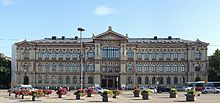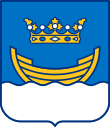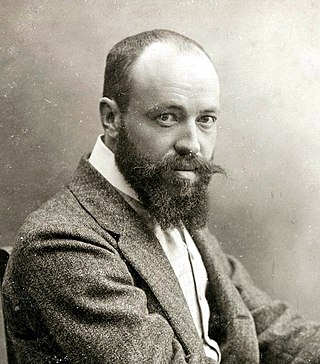
Hugo Gerhard Simberg was a Finnish symbolist painter and graphic artist.

Kiasma is a contemporary art museum located on Mannerheimintie in Helsinki, Finland. Its name kiasma, Finnish for chiasma, alludes to the basic conceptual idea of its architect, Steven Holl. Kiasma is part of the Finnish National Gallery, and it is responsible for the gallery's contemporary art collection. Its central goal is to showcase contemporary art and to strengthen its status.

Ateneum is an art museum in Helsinki, Finland and one of the three museums forming the Finnish National Gallery. It is located in the centre of Helsinki on the south side of Rautatientori square close to Helsinki Central railway station. It has the biggest collections of classical art in Finland. Before 1991 the Ateneum building also housed the Finnish Academy of Fine Arts and University of Art and Design Helsinki.

Amos Rex is an art museum named after the publisher and arts patron Amos Anderson and located in Lasipalatsi, on Mannerheimintie boulevard in Helsinki, Finland. It opened in 2018 and rapidly reached international popularity, attracting more than 10,000 visitors in a matter of weeks.
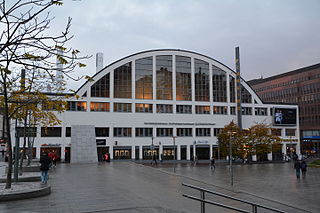
Helsinki Art Museum, abbreviated as HAM, is an art museum in Helsinki, Finland. It is located in Tennispalatsi in the district of Kamppi. The museum reopened after renovations and rebranding in 2015.
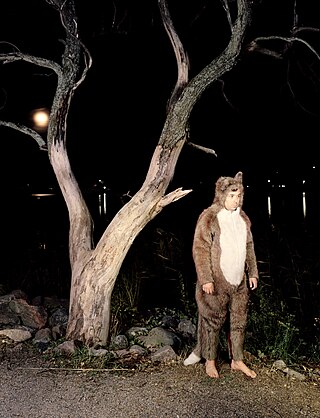
The Fox Man (2006)
Nordic art is the art made in the Nordic countries: Denmark, Faroe Islands, Finland, Iceland, Norway, Sweden, and associated territories. Scandinavian art refers to a subset of Nordic art and is art specific for the Scandinavian countries Denmark, Sweden and Norway.

Aleksander Lauréus, also Alexander Lauraeus, was a Finnish painter.

The Sinebrychoff Art Museum is an art museum located on Bulevardi in Helsinki, Finland. The museum exhibits the old European art collections of the Finnish National Gallery. In addition, half of the museum acts as a historic house museum, displaying the 19th century estate of the Sinebrychoff family.

Finnish art started to form its individual characteristics in the 19th century, when romantic nationalism began to rise in the autonomous Grand Duchy of Finland.

Marko Vuokola is a Finnish conceptual artist. He lives and works in Helsinki, Finland.

Pilvi Takala is a performance artist presenting candid camera as art. Takala won the Dutch Prix de Rome in 2011 and the Emdash Award in 2013. Her works have been exhibited in various exhibitions worldwide, including London, Aarhus and Glasgow. She is known best for being in time-based media. In 2022, Takala represented Finland in the 59th Venice Biennale.
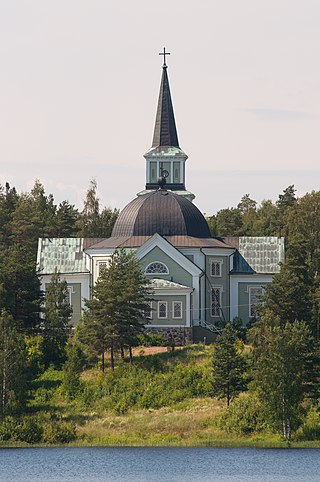
Ruokolahti Church is the Lutheran church in the town centre of Ruokolahti, in south-eastern Finland, and the main church of the Ruokolahti parish.
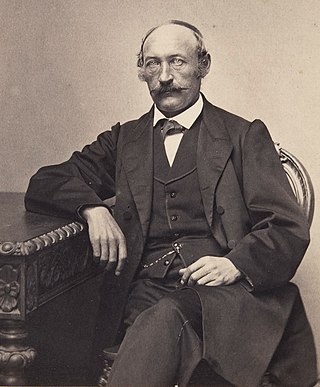
Johan Knutson was a Swedish-born Finnish landscape painter.

The March of the Björneborg Regiment is a gouache painting by Finnish painter Albert Edelfelt completed in 1892.

Kaukola Ridge at Sunset is a painting by Finnish painter Albert Edelfelt completed in 1890.

Fanny Elisabeth Wilhelmina Hjelm was a Swedish visual artist.

Torsten Gideon Wasastjerna was a Finnish painter.
